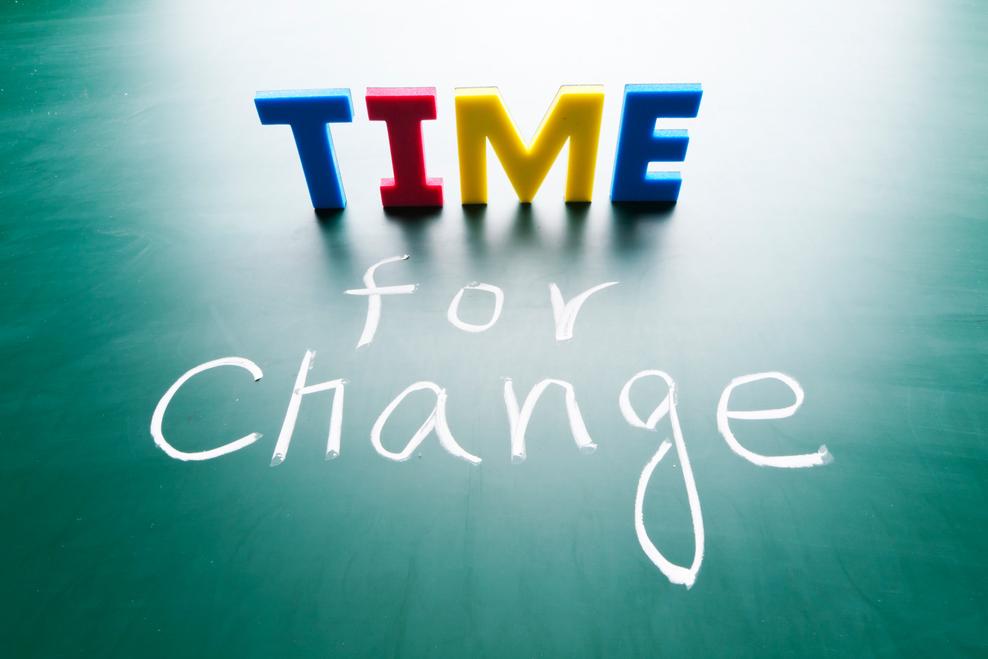You want to change. It’s not easy. You’ve probably noticed that.
We all want to become better people — stronger, calmer, healthier, more creative, more skilled, more balanced, a better friend or lover.
Why is it that really wanting it, even getting inspired, doesn’t do the trick?
What can you do to make the positive changes you long for, stick?
Meet Daphne
When she first started meditating, Daphne was inspired. For the first few weeks after a retreat, she sat on her beautiful new cushion every morning. Then, as time rolled on, her practice became spotty. After a while, meditation was an infrequent part of her week.
Shame (she confessed to me and other close friends) didn’t help.
Here was something she REALLY wanted, knew the value of, and still, she couldn’t make the change from being a non-meditator to a consistent one. She was upset, frustrated and disgusted with herself.
I wanted to help. Of course, I knew about the 28 day make or break a habit rule, and I knew that certain habits, like dominoes falling, put other good things into place effortlessly, but what I didn’t realize was how much the identity we hold impacts change. Wow!
What I learned was that identity was the single most important factor in making change happen.
Daphne’s identity was that of “spontaneous” person. She even told people that with pride. So…how could this new daily habit take root? She couldn’t be spontaneous about meditation AND do it regularly. (She had to do it every day and preferably at the same time.)
What had to change was her identity. As long as she was identifying as “spontaneous” being consistent on the cushion was a battle.
And here is an important secret: we are never limited to just one part of ourselves – it just that part we choose to identify with, so that’s what we put our attention on, ignoring the other parts.
So what needed to change? Daphne’s identity. It needed to expand. We talked about it.
She started thinking of herself as a disciplined person (who could be spontaneous). And she started paying attention to all the places in her life she was disciplined (brushing her teeth, moisturizing, preparing for her clients, etc.) Yep, those parts she hadn’t shone the light on.
As she focused on each time she did something consistently (a small win) this new identity took root. And, so did her new habit of beginning the day with 20 minutes of meditation.
Identity-Based Habits
The key to real change is focusing on creating a new ( larger) identity first. Your current behaviors are simply a reflection of your current identity. What you do now is a mirror image of the type of person you believe that you are (either consciously or subconsciously).
To change your behavior for good, you need to start believing new things about yourself.
Imagine how we typically set goals. We might start by saying “I want to eat healthier” or “I want to get stronger.” If you’re lucky, someone might say, “That’s great, but you should be more specific.”
So then you say, “I want to stop eating processed foods” or “I want to do 100 push-ups.”
These goals are centered around our performance or our appearance.
Performance and appearance goals are great, but they don’t have the traction of habitual behavior. If you’re already doing a behavior, then these types of goals can help drive you forward. But if you’re trying to start a new behavior, then it would be far better to start with an identity–based goal.
The interior of behavior change and building better habits is your identity. So take a real look at yourself.
Each action you perform is driven by the fundamental belief that it is possible. So if you change your identity (the type of person that you believe that you are), then it’s easier to change your actions.
The reason why it’s so hard to stick to new habits is that we often try to achieve a performance or appearance–based goal without changing our identity. Most of the time we try to achieve results before proving to ourselves that we have the identity of the type of person we want to become. It should be the other way around.
The Recipe for Sustained Success
Changing your beliefs isn’t nearly as hard as you might think. If you pay attention, you’ll see what has been “kept in shadow” by not shining the light of your attention there.
Try these two steps.
1. Decide the type of person you want to be.
2. Prove it to yourself with small wins.
Here are five examples of how you can make this work in your life.
Note: It is very important to start with incredibly small steps. The goal is not to achieve results at first, the goal is to become the type of person who can achieve those things. That means really seeing yourself fully and in technicolor and then living into the parts (identity expander) that you haven’t identified with.
For example, a person who works out consistently is the type of person who can become strong. Develop the identity of someone who works out first, and then move on to performance and appearance later.
Start small and trust that the results will come as you develop a new identity.
Want to lose weight?
Identity: Become the type of person who moves more every day.
Small win: Buy a pedometer. Walk 50 steps when you get home from work. Tomorrow, walk 100 steps. The day after that, 150 steps. If you do this 5 days per week and add 50 steps each day, then by the end of the year, you’ll be walking over 10,000 steps per day.
Want to become a better writer?
Identity: Become the type of person who writes 1,000 words every day.
Small win: Write one paragraph each day this week.
Want to become compassionate?
Identity: Become the type of person who perform random acts of kindness.
Small win: Pay “it” forward every Monday, Wednesday and Friday.
Want to be a better friend?
Identity: Become the type of person who always stays in touch.
Small win: Call one friend every Saturday. If you repeat the same people every 3 months, you’ll stay close with 12 old friends throughout the year.
Want to be taken seriously at work?
Identity: Become the type of person who is always on time.
Small win: Schedule meetings with an additional 15–minute gap between them so that you can go from meeting to meeting and always show up early.
What is your identity?
When you want real change, proving your identity to yourself is far more important than getting amazing results. This is especially true at first.
If you want to get motivated and inspired, watch a YouTube video, listen to your favorite song, and follow a TED talk. But don’t be surprised if you burn out after a week. You can’t just rely on being motivated. You have to become the type of person you want to be, and that starts with proving your new identity to yourself.
If you’re looking to make a change, stop worrying about results and start worrying about your identity. Become the type of person who can achieve the things you want to achieve. Take on that identity now. The results will show up in neon lights.


